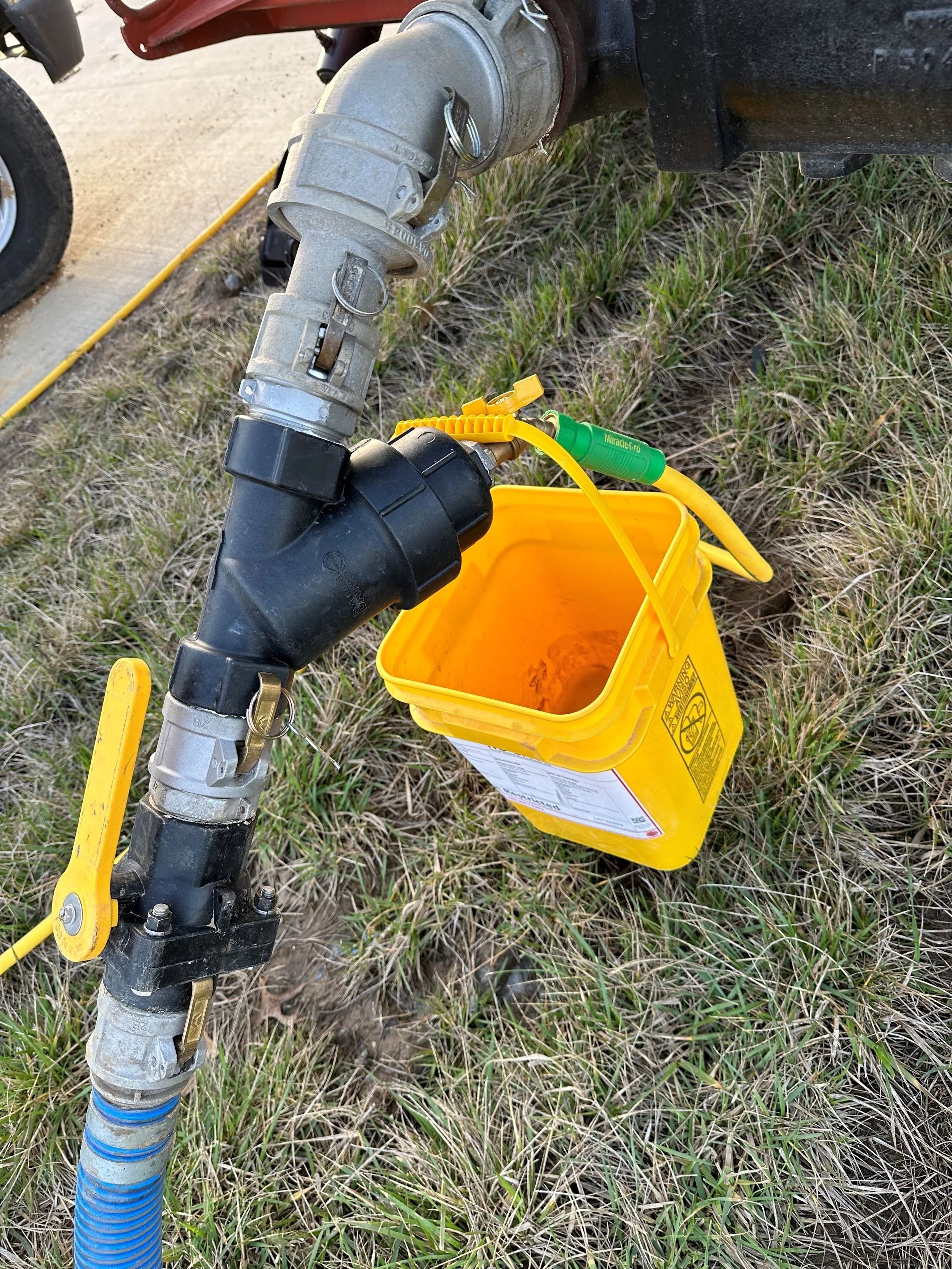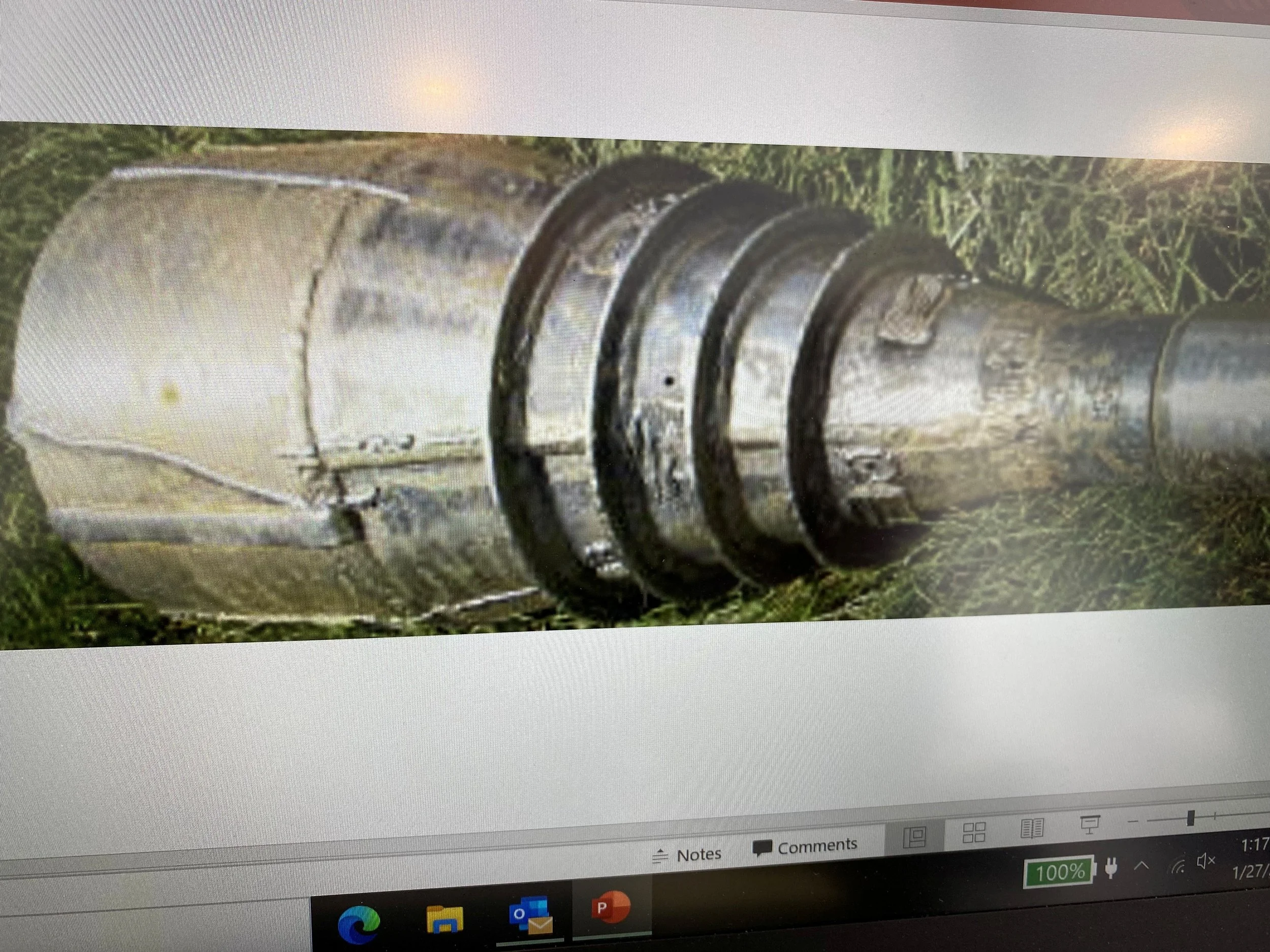1. Bale twine is your best tool.
To lay out the bore path, begin by gathering hemp bale twine, wood stakes, large nails, and concrete nails. Stretch a straight string along the entire length of the bore path. Position your locator at the center, 50 feet ahead of the beacon housing, directly over the string. Once in place, use your drill rig’s remote to follow the string, ensuring it stays aligned with the target steering. (See Photo for reference)
2. Straight Lining
Once the drilling machine is parked in the location chosen to start the bore, you will need to setup a transit over the bore path and straight line the transit over the path. Now you can line up your drill stem on the drilling machine to the bore path using the transit as shown in the photo below. The lineup should match the bottom of the stem in the machine to the top of the stem in the machine. This perfectly straight line up will greatly minimize the effort to keep the pilot bore from moving left and right out of alignment. Again, this is time well spent.
3. Let the operator do the bore.
Using your locator Target Steering Feature, the operator will watch the remote and follow the string on the ground. Determine a percent of grade that the operator can follow.
Check your beacon for percentage of grade accuracy using a 2-foot bubble level.
4. Mud pump setup for the pilot bore.
Filter housing with garden hose faucet and 2-inch ball valve. Filter hosing will reduce the chances of your beacon housing getting plug. The filter housing should have a garden hose valve to release the air in the fluid line.
5. Reamers that reduce drilling fluid consumption.
Cork screw reamer for size 3” up to 12” in clay soils uses very little fluid and increases your production while reducing fluid and labor cost. Soft soil reamers prevent over cutting of the back reamed hole by keeping all the drilling fluid pressure within the barrel of the reamer.
Soft soil reamers also make a straighter back reamed hole while mixing the soil and fluid more effectively. Aggressive reamer will go around wood and rocks in the bore path and increase the pulling pressure or get the pipe stuck.
6. Pre Reaming and Push Back Process.
Open the bore path, then pull the pipe. Heavy clay soils are better to ream 45 feet, push the reamer back out and then ream 60 feet and push the reamer back out and so on and so on.
This Slug-out method is great for steel casing and larger diameter pipes.




